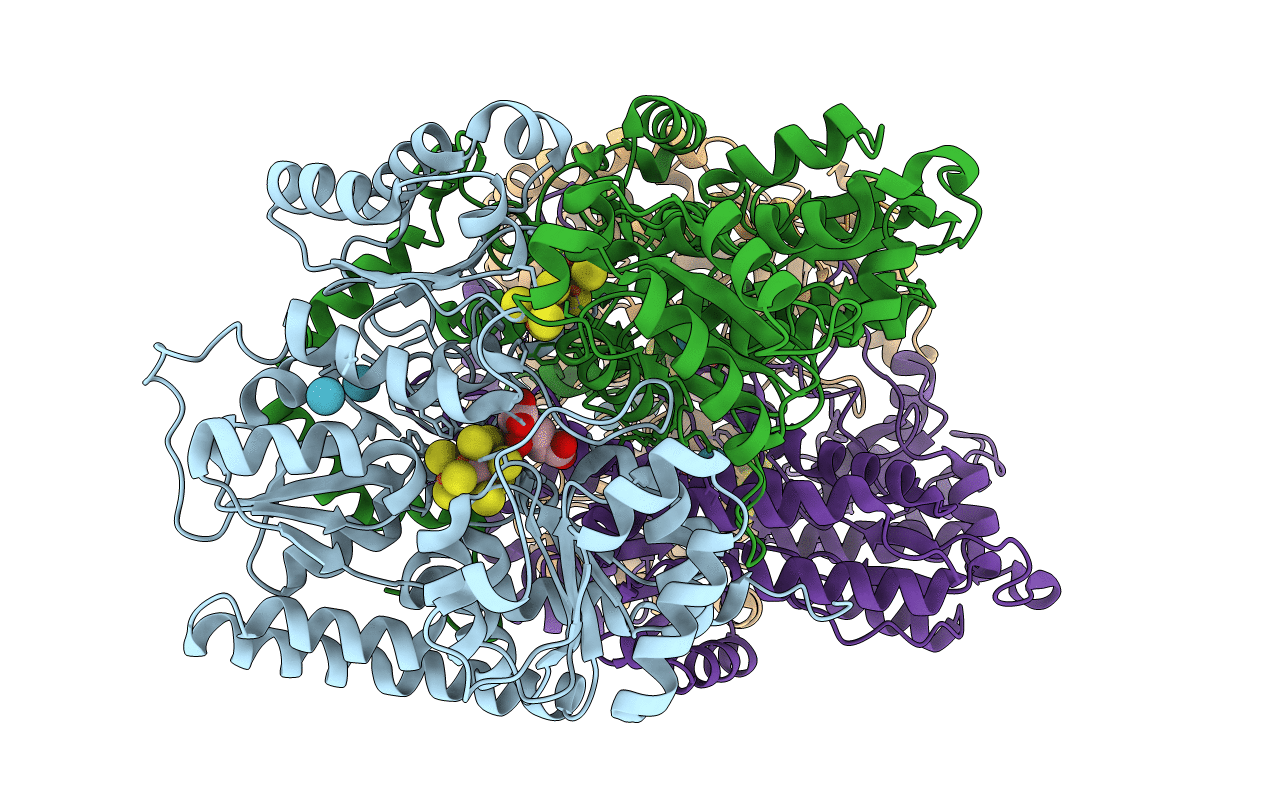
Deposition Date
2014-10-11
Release Date
2015-03-18
Last Version Date
2023-12-27
Entry Detail
PDB ID:
4WNA
Keywords:
Title:
Structure of the Nitrogenase MoFe Protein from Azotobacter vinelandii Pressurized with Xenon
Biological Source:
Source Organism:
Azotobacter vinelandii (Taxon ID: 354)
Host Organism:
Method Details:
Experimental Method:
Resolution:
2.00 Å
R-Value Free:
0.21
R-Value Work:
0.16
R-Value Observed:
0.16
Space Group:
P 1 21 1


